
| 
|

 The waters of the Stretton Hills
The waters of the Stretton HillsCwm Dale Spring
Church Stretton
Shropshire
United Kingdom
SY6 6HD
It was probably the supply of pure, fresh water which was the main reason for people establishing their homes here many years ago. The town of 'Stretune' has grown from a handful of Saxon dwellings to become the Town of
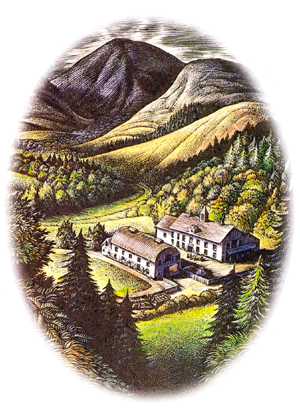
Among the oldest documented evidence of Church Stretton are the charters for the market and annual fair, granted by King John in 1214. Since this time, Stretton has been a service town for its immediate area. Although the waters were utilised by the local inhabitants and much praised for their purity by visitors for centuries, the first mention of any commercial exploitation of the local spring water was 1881. The Church Stretton Aerated Water Company opened in the Carding Mill using waters drawn from the nearby Long Mynd Spring.
Undoubtedly this company achieved a degree of success, but it was rapidly overhauled by the Stretton Hills Mineral Water Company, which opened a purpose-built factory on the
For a while both aerated water companies existed quite happily alongside each other. Entries for both companies appear in Kelly's Directory of 1885. The Church Stretton Aerated Water Company was noted as manufacturers of Soda, Lithia and Potassium Waters, Ginger Ale and Lemonade etc. and described themselves as 'sole lessees of the Long Mynd Spring, the purest water in
A later entry in Kelly's indicates diversification into 'woollens, rugs and aerated waters' for the Carding Mill, but an enhanced reputation for the aerated waters of the Stretton Hills Co. Indeed Francis Sutton F.C.S., F.I.C., an eminent analytical chemist of the day, passed very favourable comments about the quality of Cwm Dale water, which were recorded on a stone tablet that is still proudly displayed outside the bottling works to this day.
Queen Victoria herself was believed to have been so impressed with the quality of the water that she decreed that the governors of our colonies should all enjoy a regular supply of Stretton water. Cwm Dale water was subsequently shipped to all corners of the world. The town of
The latter days of the Victorian era saw the stature of the
Throughout the years many efforts have been made to turn Church Stretton into a spa town, but with little success. The vision seemed on the point of realisation in 1884 when the local
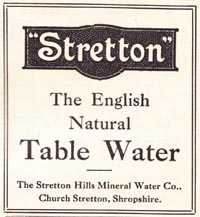
While these events were taking place the mineral water company at Carding Mill went out of business - no mention is made after 1906 and the mill itself was demolished six years later. The Stretton Hills Company meanwhile had been acquired by Jewsbury and Brown Limited and the reputation of its Cwm Dale waters grew through the years to become unquestionably the finest in the land.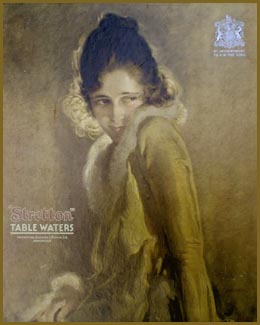 Their advertising during the Coronation year of 1953 made the point that the company had existed during five reigns, in which time they had held Royal Warrants of Appointment for several monarchs. They also had the distinction of reproducing a portrait of Her Majesty Queen Elizabeth, the Queen Mother, as part of their advertising campaign. This charming painting, by David Jagger, was much admired by Her Majesty, as her personal message on the back of the original painting indicates. The picture used in advertising is shown alongside.
Their advertising during the Coronation year of 1953 made the point that the company had existed during five reigns, in which time they had held Royal Warrants of Appointment for several monarchs. They also had the distinction of reproducing a portrait of Her Majesty Queen Elizabeth, the Queen Mother, as part of their advertising campaign. This charming painting, by David Jagger, was much admired by Her Majesty, as her personal message on the back of the original painting indicates. The picture used in advertising is shown alongside.
During the 1980s. the waters from the
 reservoir has been constructed, built of glazed brick with a reinforced roof and a brick base. The spring water wells up from the bottom of the reservoir, through the natural underlying rocks, and is piped directly to the bottling plant. Any excess water is automatically channelled to waste through an overflow pipe.
reservoir has been constructed, built of glazed brick with a reinforced roof and a brick base. The spring water wells up from the bottom of the reservoir, through the natural underlying rocks, and is piped directly to the bottling plant. Any excess water is automatically channelled to waste through an overflow pipe.
Email: bruce@thespas.co.uk (click here to send an email)
SUPPLEMENTARY INFORMATION

Left - A selection of branded bottles from the 1980s.
Below - Vintage bottles
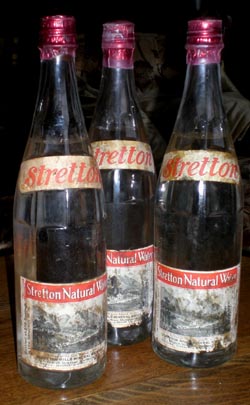
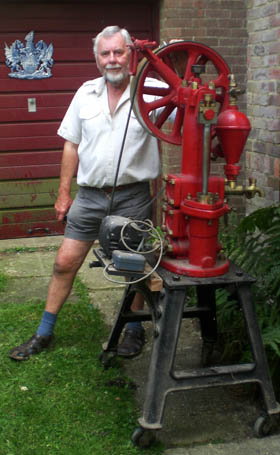
Left - The Stretton Water Pump - rescued from the works scrapheap by Bruce Osborne.
Below - Stretton Water delivered by model van.
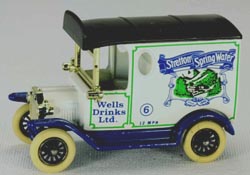
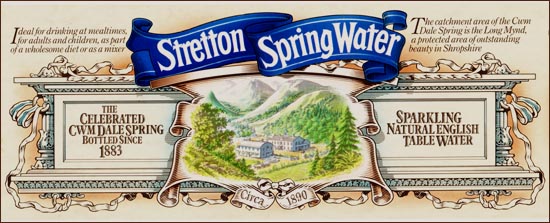
Stretton Mineral Water label from the 1980s.
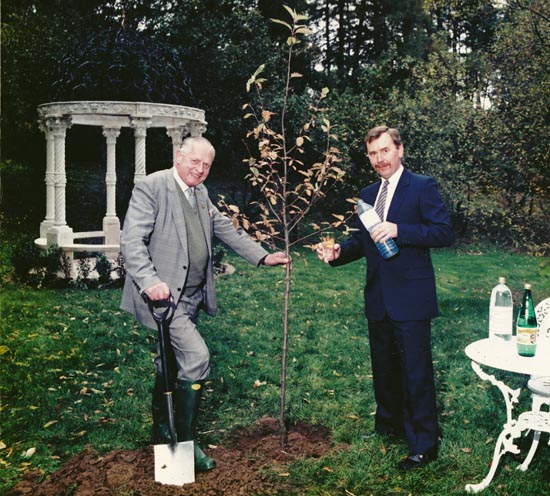
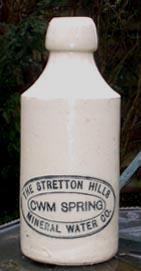
Above - Percy Thrower - gardening and tv celebrity plants the Stretton tree near the spring accompanied by Bruce Osborne - Marketing Director.
Left - Antique bottle.
For further information on the Waters of Church Stretton contact Dr Bruce Osborne by clicking email above.
Map: (Click to View in New Window)
2) LANDSCAPE:
Uplands3) INFORMATION CATEGORY:
Food & DrinksSprings and Wells General Interest
History & Heritage
5) GENERAL VISITOR INFORMATION:
Access By RoadAccess On Foot
Not Open To Public
Free Parking Nearby
Disabled access
Accessible All Year
Popular Water Collection Point


